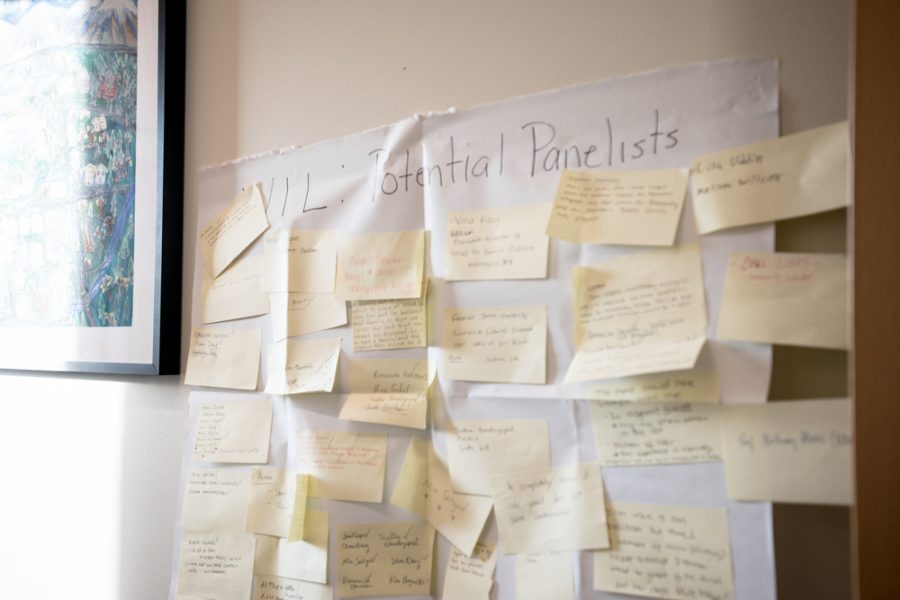Amid pre-finals madness two Tibetans––one of them a Buddhist monk––came to campus to share their art, introduce their culture and to tell their story to the students of Whitman.
“I think it will be educational for the Whitman college students to understand the kind of disadvantages that people in different communities around the world have to suffer, have to go through, and that in turn might give them a better perspective on all of the blessings that they enjoy in their lives,” said Karma Tensum, of the Tibetan Children’s Education Foundation.

WEB sponsored a four-day, multifaceted visit by two representatives of the Tibetan Children’s Education Foundation. It began on Monday at 10 a.m. with a prayer. Over the course of the next four days a monk dressed conspicuously in traditional orange and red quietly constructed a sand mandala on the Reid landing between Coffeehouse and the main floor.
“The mandala is basically a pictorial representation of a celestial palace, the palace of a Buddha. This mandala that we’re creating at Whitman is the mandala of compassion. So we can say that this mandala is a depiction of the realm of the Buddha of compassion,” said Tensum.
On the first day, the artist started at the very center of the piece slowly adding layer after layer. This particular art form has existed for millennia.
“Part of their organization’s goal is cultural preservation, and raising awareness of cultural traditions so their unique Tibetan culture doesn’t get erased,” said senior and WEB cultural events director Osta Davis. “And so part of their work is, you know, going to universities and leading trips to keep that part of the culture alive.”
An artistic meditation, sand mandalas are a uniquely Tibetan practice. Monks carefully construct these detailed pieces of art from colored sand. Yet, after the days of focused work, the practice ends with the mandala’s ritualistic destruction.
“They erase it all at the end which I think is supposed to speak to the impermanence of life, everything,” said sophomore and co-organizer of the Namaste meditation club Theo Ciszewski.
The artwork focuses on the insight of impermanence, but the organizational goal of the foundation is quite different.
“The Tibetan children’s education foundation works on the premise that the Tibetan culture is ancient, it is sacred, and that it is something worth preserving,” said Tensum. “The second fact that we deal with is this that Tibet itself, under the Chinese communist rule, our culture is not doing that well. So what do you do as a small non-profit here in the United States to help preserve that culture? We believe that one way we can do that is by informing, educating people in the west about what a wonderful culture it is.”
Under Chinese rule Tibetans are not allowed religious freedom, their traditional lifestyles have been made impossible by social displacement and they receive little benefit from China’s booming economy.
“Tibetans on all accounts have become like second-class citizens in their own country,” said Tensum.
Tensum and the Tibetan Children’s Education Foundation work on multiple fronts to preserve the Tibetan culture. They have constructed dozens of mandalas throughout the United States trying to bring the Tibetan lifestyle, beliefs and political challenges into the public consciousness.
In addition to constructing the spiritual sand mandala, the visitors gave Whitman students a view into the cultural past and present of Tibetan Buddhists. They presented a film on Tuesday, April 30, and Tensum delivered a lecture on his experience during the Tibetan Diaspora on Wednesday, May 1. In his presentation he recounted and reflected on his escape across the Himalayas as a child.
The Tibetan Children’s Foundation gave the Whitman community a window into the struggles of a people, and a meditation on the themes of impermanence and compassion, perhaps the perfect reality check at this late hour in the semester. “We hope that we can keep Tibet in the hearts and minds of people in the west,” said Tensum.










